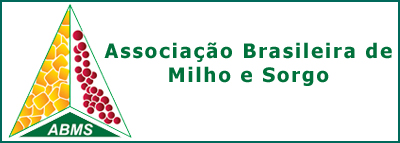DEMANDA DE NUTRIENTES PELO MILHO SAFRINHA EM FUNÇÃO DA ÉPOCA DE SEMEADURA E ADUBAÇÃO
DOI:
https://doi.org/10.18512/1980-6477/rbms.v16n3p481-494Keywords:
Zea maysAbstract
RESUMO - No Brasil Central, a produtividade e a demanda nutricional do milho em sucessão à soja cultivada no verão são dependentes das condições climáticas ao longo do ciclo. Sendo assim, objetivou-se com esse trabalho quantificar a extração e exportação de nutrientes pelo milho, em função da época de semeadura e da adubação fornecida na safrinha de 2014, em Rio Verde-GO. Em cada época de semeadura (29/01/2014 e 25/02/2014) foi conduzido um experimento em delineamento de blocos casualizados, com quatro repetições, num esquema fatorial 4x2, sendo quatro adubações de semeadura (00-00-00, 00-50-50, 25-50-50 e 50-50-50 kg ha-1 de N-P2O5-K2O), com ou sem adubação nitrogenada em cobertura (0 ou 50 kg ha-1 de N). Ao final do ciclo, foram avaliados o rendimento de grãos e o acúmulo de nutrientes nos componentes da parte aérea. Foram determinadas a extração e a exportação de nutrientes. O desenvolvimento e a extração de nutrientes pelo milho safrinha são influenciados pela época de cultivo, assim como pela adubação nitrogenada em cobertura, sem, contudo, ser afetados pela adubação NPK realizada na semeadura. Há maior produção de biomassa seca e produtividade de grãos com a semeadura em janeiro em comparação a fevereiro. O cultivo na primeira época e o nitrogênio em cobertura resultam em maior extração da maioria dos nutrientes, sem necessariamente implicar maiores taxas de exportação com a colheita dos grãos. Em média, a exportação por tonelada de grãos produzida foi de 14,2; 1,5; 2,8; 0,07; 0,7 e 1,0 kg de N, P, K, Ca, Mg e S; e de 2; 12; 4 e 16 g de Cu, Fe, Mn e Zn, respectivamente. Esses valores implicam doses relativamente baixas de fertilizantes na adubação de manutenção para repor a exportação na colheita do milho safrinha.
Palavras-chave: sucessão de culturas, extração, exportação, requerimentos nutricionais, Zea mays L.
OFF-SEASON CORN NUTRIENT DEMAND ACCORDING TO THE SOWING DATE AND FERTILIZATION
ABSTRACT - In Central Brazil, productivity and nutritional demand of corn in succession to soybeans grown in summer are dependent on climatic conditions throughout the cycle. Therefore, the objective of this work was to quantify the extraction and exportation of nutrients by off-season corn, according to the sowing date and fertilization in Rio Verde, State of –Goiás, Brazil. In each sowing time (01/29/2014 and 02/25/2014), a randomized complete block design experiment was carried out, with four replications, in a 4x2 factorial scheme, with four sowing fertilizations (00- 00-00, 00 -50-50, 25-50-50 and 50-50-50 kg ha-1 of N-P2O5-K2O), with or without nitrogen fertilization (0 or 50 kg ha-1 N). At the end of the cycle, grain yield and nutrient accumulation in shoot components were evaluated. The extraction and export of nutrients were determined. The growing season and the sidedress nitrogen influence the development and extraction of nutrients by the off-season corn, without, however, being affected by the NPK fertilization at sowing. There is higher production of dry biomass and grain yield with sowing in January compared to February. First-season cultivation and sidedress nitrogen result in greater extraction of most nutrients, without necessarily implying higher export rates with grain harvest. On average, the export per ton of grain produced was 14.2, 1.5, 2.8, 0.07, 0.7, and 1.0 kg for N, P, K, Ca, Mg and S; and 2, 12, 4, and 16 g for Cu, Fe, Mn and Zn, respectively. These values result in relatively low amounts of fertilizers in the maintenance fertilization to replace the nutrients exported by the grain harvest.
Keywords: succession crops, extraction, export, nutrient requirements, Zea mays L.
Downloads
Published
How to Cite
Issue
Section
License
Authors retain copyright and grant the journal right of first publication with the work simultaneously licensed under the Creative Commons Attribution License that allows the sharing of work and recognition of the work of authorship and initial publication in this journal.
Authors are able to take on additional contracts separately for non-exclusive distribution of the version of the paper published in this journal (eg, in an institutional repository or publish as a book), with acknowledgment of its initial publication in this journal.
Authors are permitted and encouraged to post their work online (eg, in institutional repositories or on their website) at any point before or during the editorial process, as this may leadto productive exchanges, as well as increase the impact and citation of published work.



